Punjab is known for lavish weddings which are a reflection of their culture. They include numerous ceremonies, traditions, and a wide range of food. We take a journey through India’s heartland
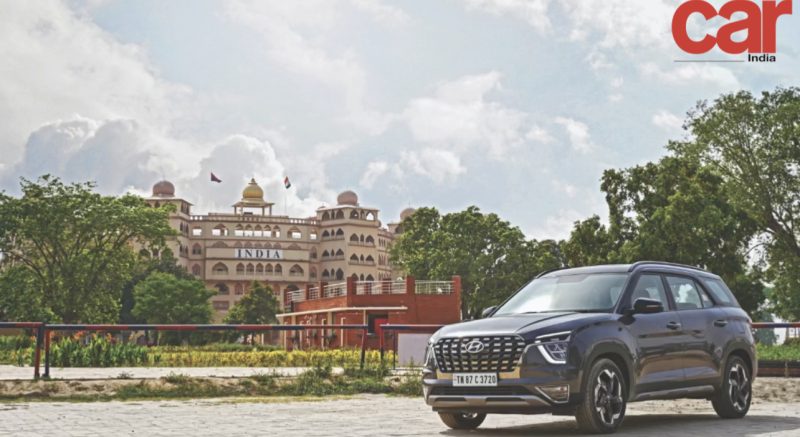
Story: Kurt Morris
Photography: Apurva Ambep
A road trip is one of the most effective ways to revitalise and improve one’s spirits. People who enjoy travelling prefer road excursions because these provide a unique experience. Whether travelling with family or friends, road trips are among the best ways to get the most out of a holiday.
There are several tourist attractions spread across India. So, no matter which part of the country one lives in, there is always the possibility of planning a quick road trip. Short road excursions of six to seven hours are preferred by most since they are comfortable. Many others, though, choose longer ones that are spread over several days. For us, at Car India, it is the latter that keeps us going and this time we are taking an incredible premium SUV, the Hyundai Alcazar, to explore the great state of Punjab.

Punjab boasts of one of the world’s oldest and most diverse cultures. Punjabi poetry, philosophy, spirituality, education, art, music, food, science, technology, military stature, architecture, traditions, values, and history all reflect this diversity and distinctiveness. It’s difficult to overlook the compassion and zeal displayed in the Punjabi way of life. While the Punjabis are famed for their tenacity, their culture reflects a diverse range of historical civilizations. In Punjab, visitors are often treated as God’s representatives and are well looked after.
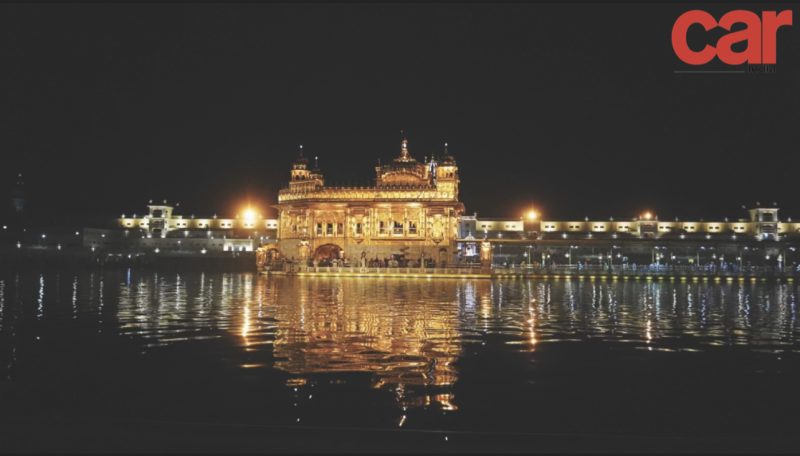
Punjab is known for being unique, colourful, and extravagant. Punjabi culture is well known and respected all over the world. The mouth-watering Punjabi cuisine satisfies your taste buds like never before. Bhangra and colourful extravagant costumes attract you like nothing else. We started our journey in the city of Amritsar. The Golden Temple is Amritsar’s most famous monument, revered for both its spiritual significance and its architectural beauty. This gurudwara, also known as Harmandir Sahib or Darbar Sahib, is Sikhism’s holiest pilgrimage site and a popular tourist destination in India. If Amritsar is next on your bucket list, be sure to add a visit to this magnificent house of worship.
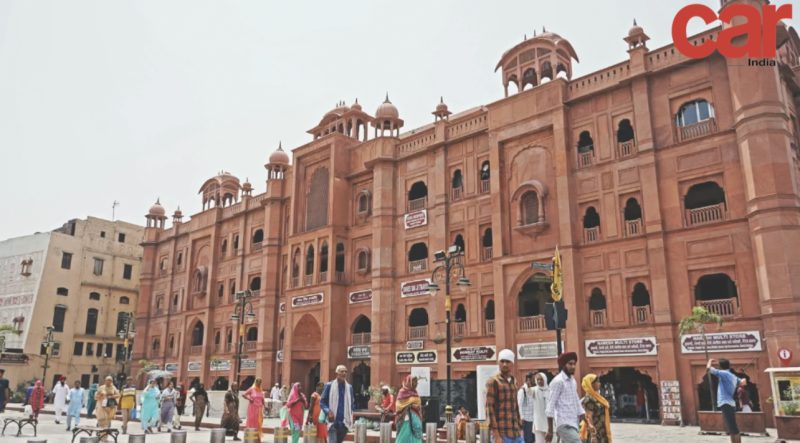
The Golden Temple and its complex of numerous buildings placed around the tank are the pilgrims’ primary focus. The Golden Temple is located in the centre of Amritsar or Amrit Sarovar, a gorgeous water basin that gives the city its name. The shrine has elements of various architectural traditions, including Indo-Mughal and Hindu Rajput architecture. It is a two-story building. The shrine’s lower level is made of marble, while the upper level is coated in gold panels. At the summit of the structure is a 900 kg gold-gilded dome. The shrine’s doors are even coated in gold foil. To the east of the temple are guest houses for pilgrims, a dining hall that serves thousands of pilgrims and other visitors each day, and the Assembly Hall on the south-east corner.
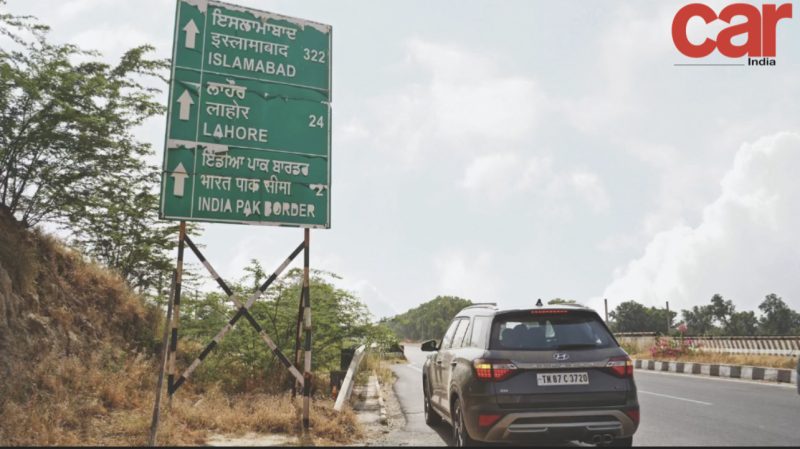
After getting our souls filled with some spiritual blessing, we drove all the way to the Wagah-Attari Border near Amritsar, which is the point where the border between Indian and its neighbouri is drawn. It has served as a road link between the two countries since 1947, when India acquired Independence. The Wagah-Attari Border Ceremony, which takes place every evening, is also a popular tourist attraction.
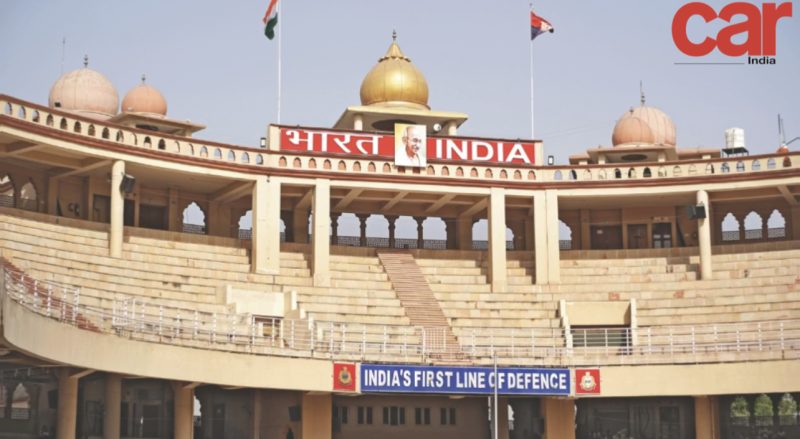
Wagah is a smalli town located 32 kilometres from Amritsar on the historic Grand Trunk Road that connects Amritsar and Lahore. The Wagah-Attari Border Ritual, also known as the lowering of the flag ceremony, takes place at the India border gate. This military drill, which has taken place every day since 1959, begins two hours before dusk. The ceremony, which is co-hosted by the Indian Border Security Force (BSF) and their counterparts on the other side, draws tourists from all across the country.
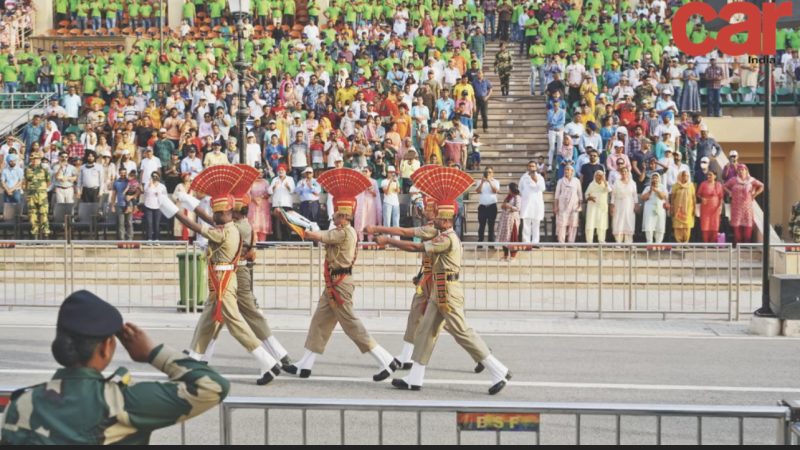
The practice is a 30-minute drill with the goal of lowering the national flags and formally closing the border between the two countries till sunrise. It all begins with a large procession of soldiers from both sides of the border. Then, in perfectly timed movements, the iron gates at the border are opened and the national flags on both sides are taken down. Soldiers from both sides shake hands after the flags are folded and the iron gates are closed, signalling the end of the ritual.
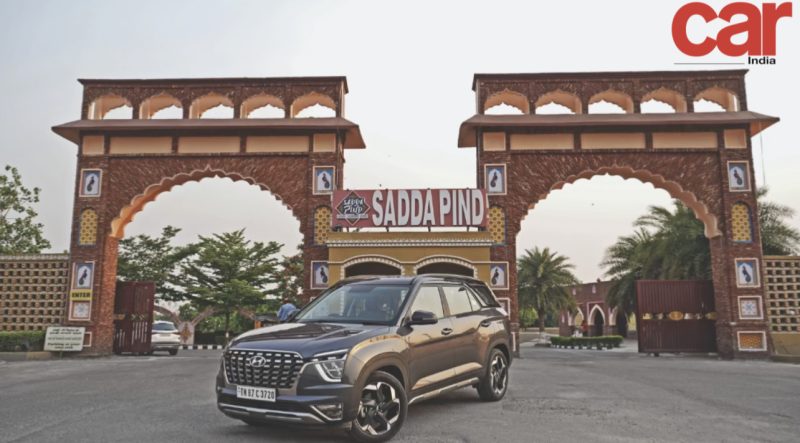
To really get to know India’s heartland we needed to experience rural Punjab. We came across this place known as Sadda Pind on the outskirts of Amritsar. Sadda Pind is a site that celebrates Punjabi culture. The location is a stunning representation of the old and traditional Punjabi Pind (village). Sadda Pind, which spans 12 acres, is a popular tourist destination in Amritsar. It’s what a typical village looks like in real life.
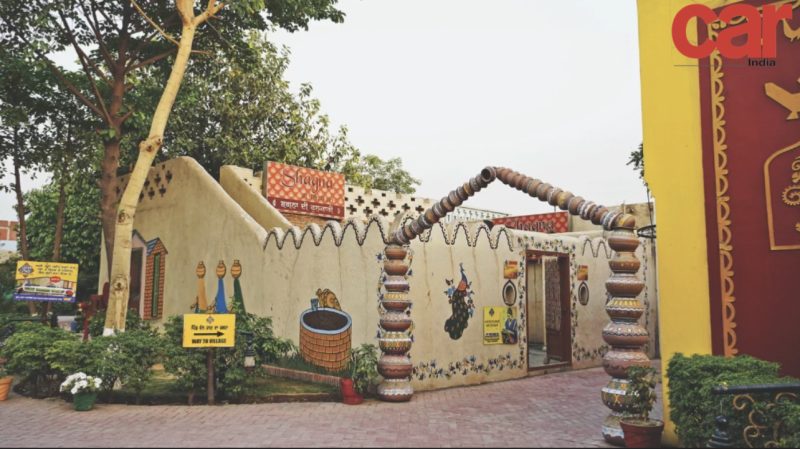
Sadda Pind shows men preparing livestock fodder, women weaving on the charkha (spinning wheel), and men producing dung cakes in rural Punjab. Apart from learning about the processes involved in handicraft, visitors to Sadda Pind also get to learn about how Punjab’s cottage industry operates. Women can be seen working on traditional Punjabi handicraft such parandas, phulkaris, durries, and juttis on the streets of the Pind. There is a “Sangeet Ghar” with vintage music records on the boundary wall. Finally, for those interested in experiencing traditional Punjabi culture and lifestyle, there is a one-stop shop that sells souvenirs.
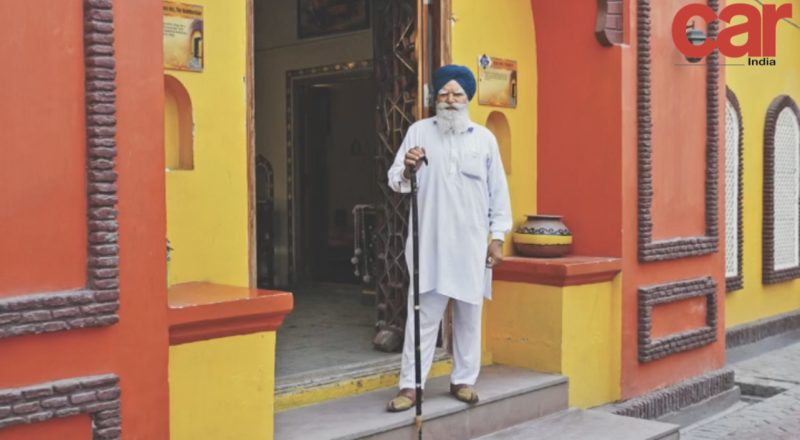
Without ever leaving your dinner table, food can transport you to another time, another nation, and another culture, which is why ethnic food is such a vital way for us to interact and relate to one another. Punjab is known as India’s “bread basket” producing massive amounts of wheat, potatoes, sugarcane, millet, barley, maize, mustard, lentils, pulses, fruit, and vegetables.
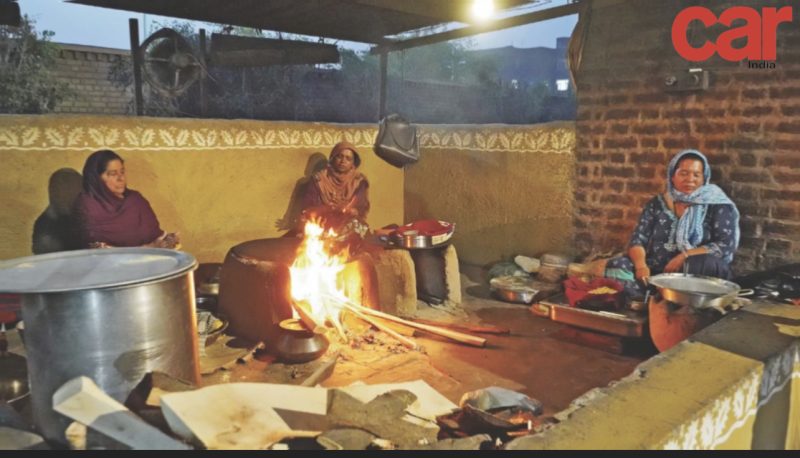
It is also one of India’s wealthiest states and each bite of Punjabi cuisine is testimony to this. Many people in the south tend to believe that most north Indians are Punjabis, which is understandable given the Punjabi influence on the society up north. Whatever divides people, food, particularly rich Punjabi cuisine with its mouth watering taste and desi ghee, has the capacity to bring us all together.

We sat down for a meal at the legendary Kesar Da Dhaba. It is a must to visit this pinnacle of Amritsar’s culinary and cultural heritage, as well as India’s. Kesar Da Dhaba, which first opened its doors in 1916 in Sheikhupura, is an epitome of contemporary Indian history. The visitors’ book has the names of notable figures such as Lala Lajpat Rai and Jawahar Lal Nehru. After India’s partition in 1947, Kesar Da Dhaba was relocated to Amritsar and its journey has been a walk down memory lane ever since.
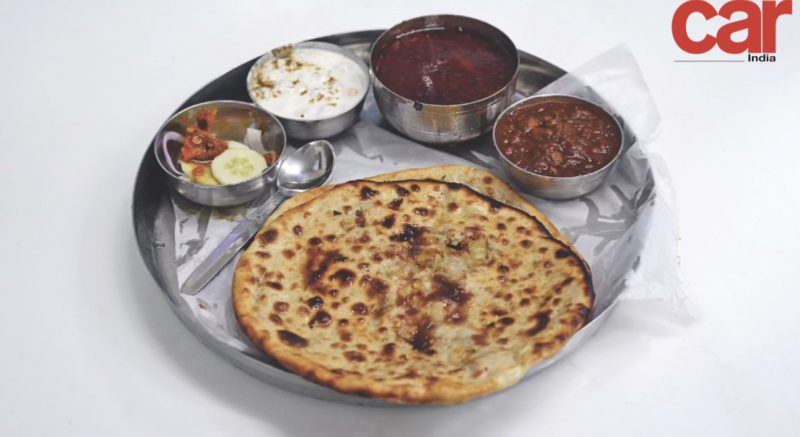
The dhaba receives a continuous stream of customers between 11.00 am and 11.00 pm. Palak paneer, chana, rajma, and saag fry are among the other specialities on their 10-dish menu, but it’s their mah ki daal-lachcha parantha combo that draws the crowds. The dal makhani is the restaurant’s hallmark dish (dal with butter). Dal makhani is made in a huge steel cauldron and cooked for nine hours before being served to customers. This place is also famous for phirni, which is served in earthen bowls.
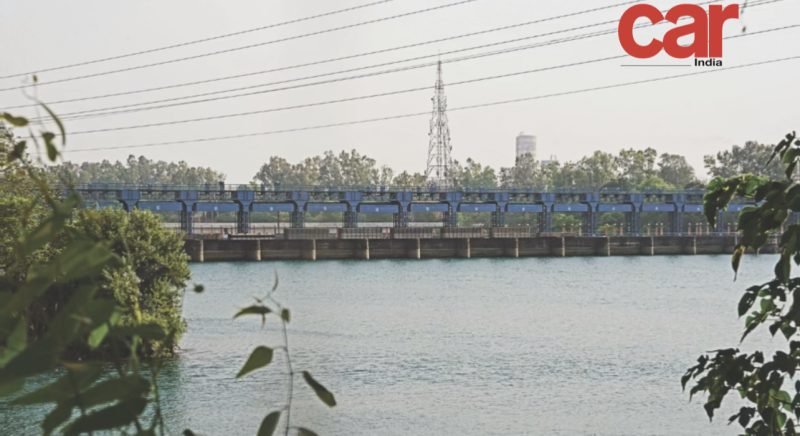
Finally, we visited the Bhakra-Nangal Dam, Asia’s second tallest dam located on the border between Punjab and Himachal Pradesh. With a height of 207.26 metres and a length of 168.35 kilometres, it is India’s highest straight-gravity dam. The Bhakra-Nangal dam is one of India’s first river valley development initiatives after Independence. The project was signed in November 1944 by the then Punjab Revenue Minister Sir Chhotu Ram and the King of Bilaspur and it was completed on 8 January 1945.
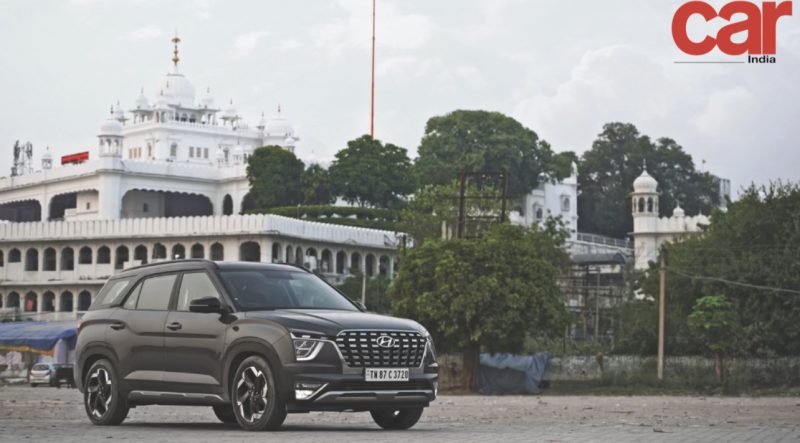
Let’s not forget about our trusty Hyundai Alcazar that accompanied us during this long journey. The Alcazar kept us cool during the peak Indian summer with its ventilated cooled seats and its powerful 2.0-litre petrol engine made the journey pleasant and stress-free. Over this journey through this great state of Punjab, one thing we got to find out first-hand about Punjabis is that they are jovial and warm-hearted folk.
Also Read: Hyundai i20 N Line explores the culture of Karnataka
Story: Kurt Morris




